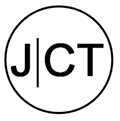During my job search process and first position post-grad school there was one tool that I relied on heavily to research, make connections and learn from a diverse network of individuals in related professions. That tool was Linked In, and it’s one that I still use consistently today.
Being fairly new to California and my role at TGR Foundation, Linked In has given me helpful information to meet locals and get involved. As a frequent user and advocate for the platform here are five ways to use Linked In outside of job searching.
Stay connected with professionals in your network.
If you’re like me and many other professionals with 500+ Linked In Connections it can be tough to stay up to date on everything happening in their lives and keep them updated on yours. One way I overcome this issue is by being selective about who I follow. The unfollow button allows you to stay connected with personal or shared connections whose content don’t interest you or use the platform like Twitter or Facebook.
Capture endorsements and recommendations.
Asking and giving recommendations and endorsements on the platform is a great way to capture quality feedback that could be beneficial to your future as a professional and opportunities for collaboration. This is a feature I should definitely use a lot more. You can pull from these comments for proposals, cover letters or biography information in the future.
Endorsements highlight specific skills such as writing, social media management, planning, organization, etc.
Recommendation are personal statements from those who know you and can share personal information and/or experiences from their collaboration with you or witness to your performance and strengths.
See how your position and salary compares to others in your field and region.
Millennials in the early stages of their careers are often take advantage of because they’re unaware that it’s happening. Responsibilities and salary allotment are two areas I’ve experienced it first hand. Whether you’re happy or miserable in your position, always see how your responsibilities and salary compares to your peers. One feature I love on Linked In is one that shows you jobs you would be a top candidate for based on your profile. These comparisons can also be used to introduce new practices or strategies.
Stay up to date on industry trends and best practices.
Following groups and seasoned professionals gives you great opportunities to learn about what’s happening and how organizations and career counterparts are responding. I always have several articles opened in new tabs or bookmarked to read or reference later when I’m strolling through my feed.
Learn about and from professional development events
It’s impossible to attend every mixer, luncheon, conference and panel available in your community or industry, but you can always choose which ones are accessible and most beneficial. I’ve learned about several events that I’ve been able to attend and gained great insight from connections who attended trainings in other states that I knew nothing about. Both are beneficial.
Do you have a Linked In account? How do you use it to enhance your network and/or skills? Share below.
XX,
Jasmine C. Tate

